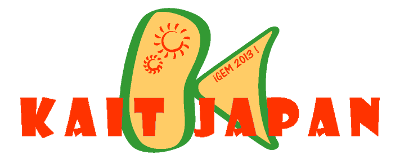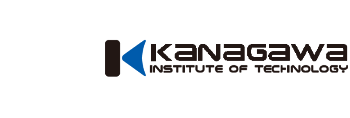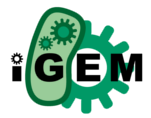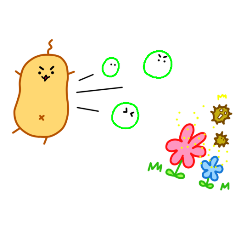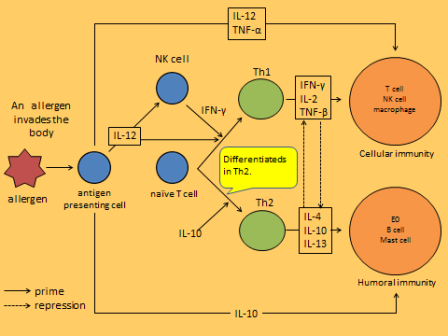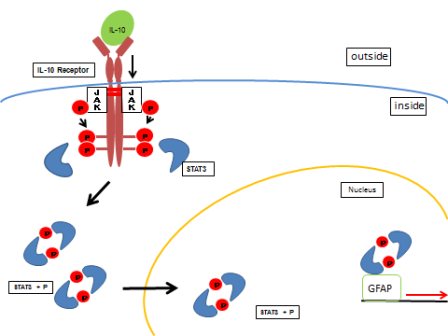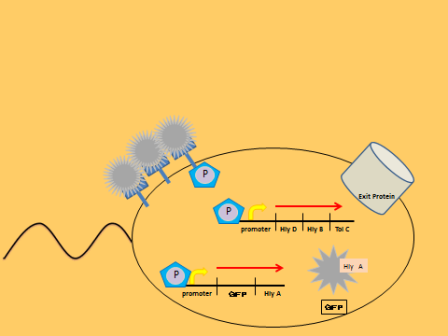Team:KAIT Japan/Project
From 2013.igem.org
| (13 intermediate revisions not shown) | |||
| Line 22: | Line 22: | ||
1. Overview | 1. Overview | ||
| - | + | <br> | |
Japanese on of six people is troubled now by hay fever. These people take a medicine for the hay fever. But, If they take it , they become sleepy. If become sleepy, they cannot work and study. So, we are working on a project to relive hay fever by Escherichia coli to improve these. | Japanese on of six people is troubled now by hay fever. These people take a medicine for the hay fever. But, If they take it , they become sleepy. If become sleepy, they cannot work and study. So, we are working on a project to relive hay fever by Escherichia coli to improve these. | ||
It is two kinds of immune cells said to be Th1 cell and Th2 cell to greatly participate in hay fever, and both usually keep balance and control immunoreaction. | It is two kinds of immune cells said to be Th1 cell and Th2 cell to greatly participate in hay fever, and both usually keep balance and control immunoreaction. | ||
| Line 32: | Line 32: | ||
2. Immune system | 2. Immune system | ||
| + | <br> | ||
Immune responses are regulated firstly by antigen-presenting cells ,such as the macrophages and dendritic cells ,and by the T helper lymphocyte subclasses Th1 and Th2, which are components of acquired immunity. | Immune responses are regulated firstly by antigen-presenting cells ,such as the macrophages and dendritic cells ,and by the T helper lymphocyte subclasses Th1 and Th2, which are components of acquired immunity. | ||
Naive Th0 cells are clearly bipotential and serve as precursors of Th1 and Th2 cells. Among the factors currently known to influence the differentiation of these cells towards the Th1 or Th2 subsets, the cytokines produced by cells of the innate immune system are the most important. Thus, IL-12, produced by activated macrophages or other Allergens, is the major inducer of Th1 differentiation and hence cellular immunity; this cytokine acts in concert with natural killer (NK)-cell-derived IFN-γ to promote Th1 responses. | Naive Th0 cells are clearly bipotential and serve as precursors of Th1 and Th2 cells. Among the factors currently known to influence the differentiation of these cells towards the Th1 or Th2 subsets, the cytokines produced by cells of the innate immune system are the most important. Thus, IL-12, produced by activated macrophages or other Allergens, is the major inducer of Th1 differentiation and hence cellular immunity; this cytokine acts in concert with natural killer (NK)-cell-derived IFN-γ to promote Th1 responses. | ||
| Line 38: | Line 39: | ||
Th1 and Th2 responses are mutually inhibitory. Thus, IL-12 and IFN-γ inhibit Th2, and IL-4 and IL-10 inhibit Th1 responses. IL-4 and IL-10 promote humoral immunity by stimulating the growth and activation of mast cells and eosinophils, the differentiation of B cells into antibody-secreting B cells and B-cell immunoglobulin switching to IgE. Importantly, these cytokines inhibit macrophage activation, T-cell proliferation and the production of pro-inflammatory cytokines. Thus, IL-4 and IL-10 are the major anti-inflammatory cytokines. | Th1 and Th2 responses are mutually inhibitory. Thus, IL-12 and IFN-γ inhibit Th2, and IL-4 and IL-10 inhibit Th1 responses. IL-4 and IL-10 promote humoral immunity by stimulating the growth and activation of mast cells and eosinophils, the differentiation of B cells into antibody-secreting B cells and B-cell immunoglobulin switching to IgE. Importantly, these cytokines inhibit macrophage activation, T-cell proliferation and the production of pro-inflammatory cytokines. Thus, IL-4 and IL-10 are the major anti-inflammatory cytokines. | ||
| - | [[File: | + | [[File:ReR1.png]] |
<br> | <br> | ||
| - | Figure1 Immune system | + | :::::::Figure1 Immune system |
<br> | <br> | ||
So, we will make a device to make IL12 to receive IL10 by using the immune system, | So, we will make a device to make IL12 to receive IL10 by using the immune system, | ||
| Line 47: | Line 48: | ||
3. The details of our project | 3. The details of our project | ||
| + | <br> | ||
We wanted to try to create a device, as shown in Figure 2. | We wanted to try to create a device, as shown in Figure 2. | ||
| - | + | <br> | |
3-1 Interleukin10 receptor | 3-1 Interleukin10 receptor | ||
| + | <br> | ||
IL10 receptor receives IL10. IL10 resepter consists of two kinds, α chain and β chain. | IL10 receptor receives IL10. IL10 resepter consists of two kinds, α chain and β chain. | ||
And it has taken the structure of the dimer. | And it has taken the structure of the dimer. | ||
IL10 is increased in the body, IL10resepter will be receiving first. | IL10 is increased in the body, IL10resepter will be receiving first. | ||
| - | + | <br> | |
3-2 STAT3(Signal Tranducer and Activator of Transcription 3) | 3-2 STAT3(Signal Tranducer and Activator of Transcription 3) | ||
| - | + | <br> | |
| + | Stat3 is a signal and transcription factors in the cell.It is present in the cytoplasm in the deactivation mode | ||
IL10 binds to the IL10 receptor, intracellular domain of JAK(Janus Kinas) receptor is phosphorylated STAT3. | IL10 binds to the IL10 receptor, intracellular domain of JAK(Janus Kinas) receptor is phosphorylated STAT3. | ||
It shifts to the nucleus to form a dimer that STAT3 is phosphorylated. | It shifts to the nucleus to form a dimer that STAT3 is phosphorylated. | ||
STAT3 dimers migrated to the nucleus, and activates the transcription by binding to the GFAP gene as a target. | STAT3 dimers migrated to the nucleus, and activates the transcription by binding to the GFAP gene as a target. | ||
| - | + | :[[File:Pro.png]] | |
| + | <br> | ||
3-3 Downstream gene | 3-3 Downstream gene | ||
| + | <br> | ||
STAT3 phosphorylated binds to the GFAP gene promoter. | STAT3 phosphorylated binds to the GFAP gene promoter. | ||
The portion binds to STAT3 phosphorylated exists in a GFAP gene. | The portion binds to STAT3 phosphorylated exists in a GFAP gene. | ||
| Line 70: | Line 76: | ||
This time, since the test interleukin of whether the activity is difficult in the short term, it was thought that instead of the GFP the IL12, it would be to be replaced by interleukin if successful. | This time, since the test interleukin of whether the activity is difficult in the short term, it was thought that instead of the GFP the IL12, it would be to be replaced by interleukin if successful. | ||
| - | + | :[[File:Rr.png]] | |
| - | + | ::::::::::Figure3 GFP | |
| - | + | ||
Latest revision as of 00:27, 28 September 2013
|
|
ProjectHay fever curE.coli1. Overview
2. Immune system
This time, since the test interleukin of whether the activity is difficult in the short term, it was thought that instead of the GFP the IL12, it would be to be replaced by interleukin if successful.
|
 "
"
